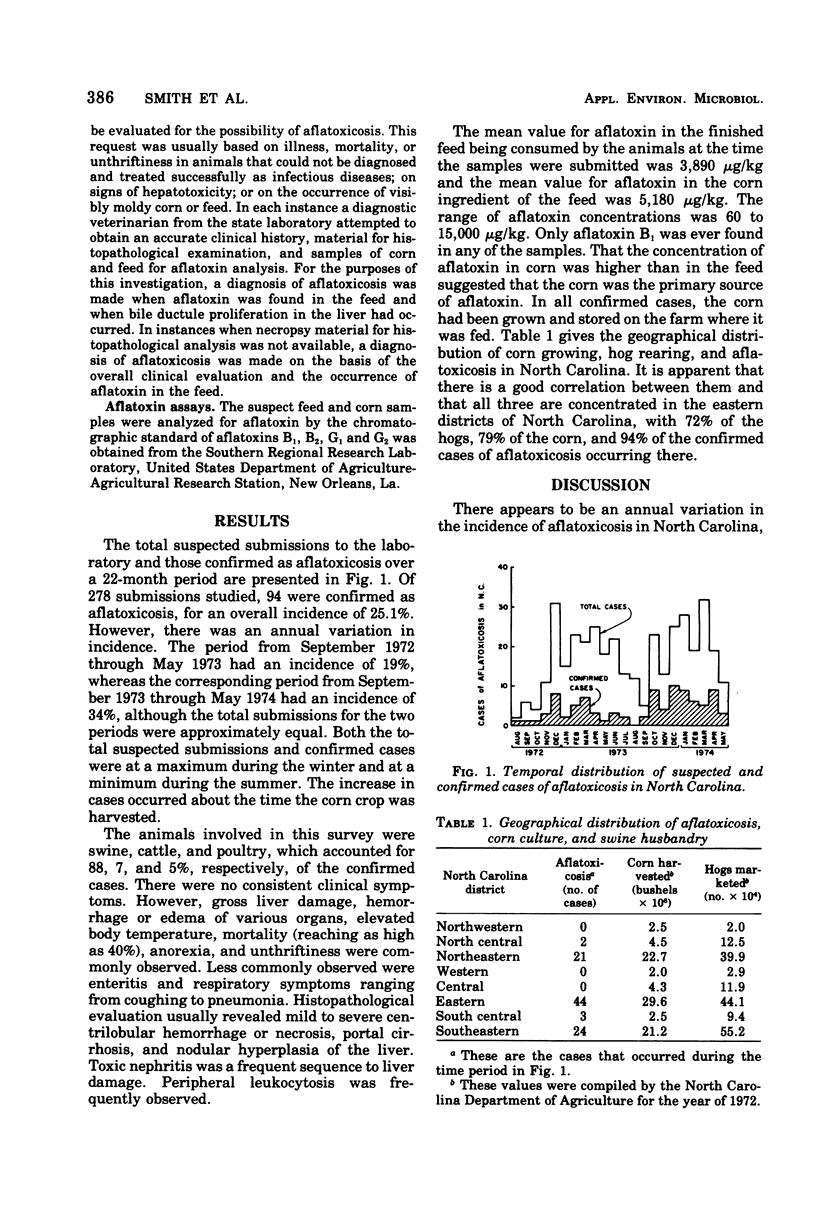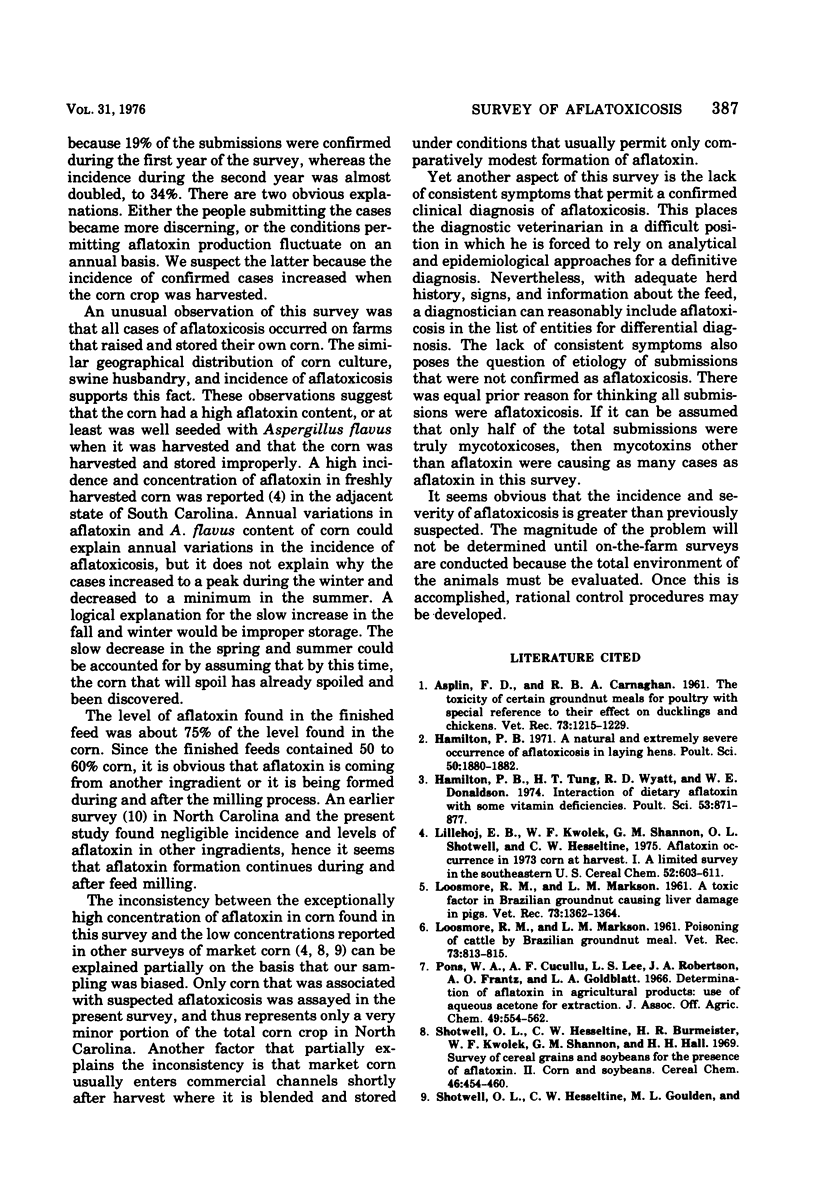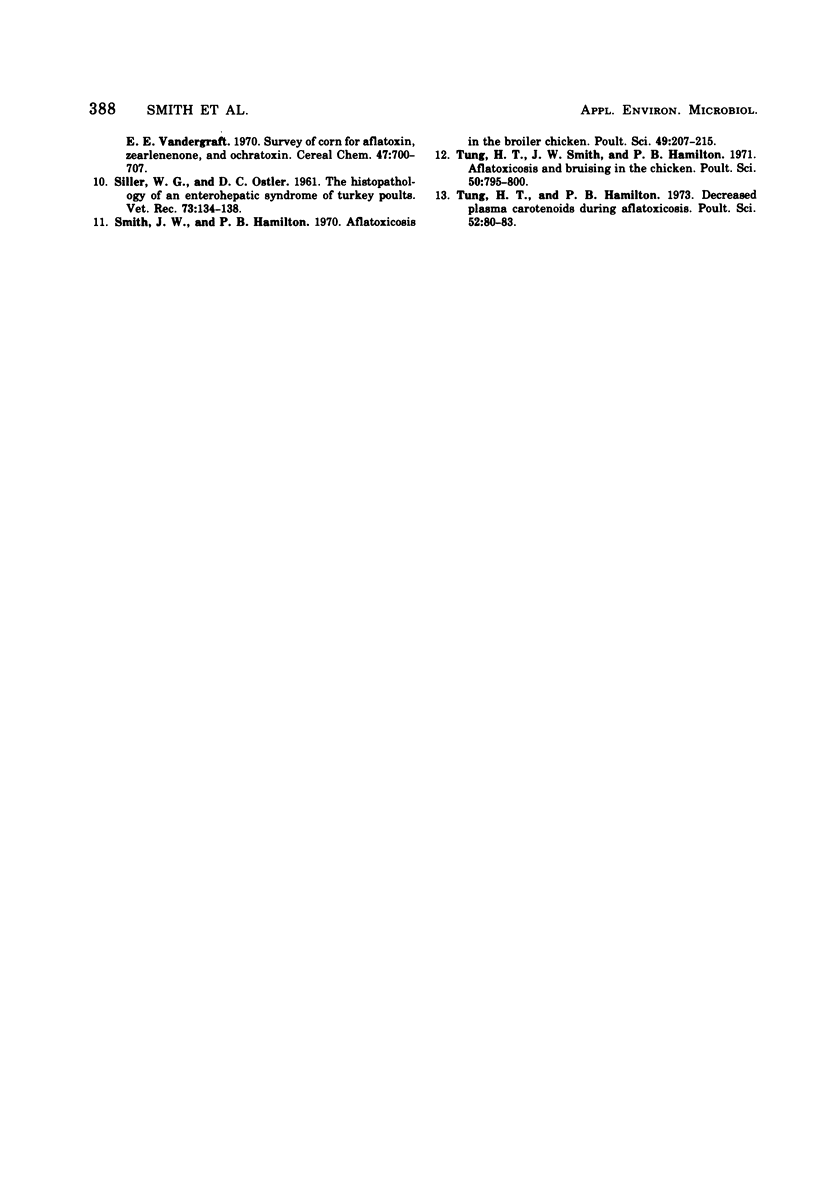Abstract
Over a 22-month period, 278 submissions of farm animals were made to the North Carolina Diagnostic Laboratory for suspected aflatoxicosis, and 94 cases were confirmed on the basis of finding aflatoxin in the feed and the occurrence of bile ductule proliferation. There was an annual variation in the incidence of aflatoxicosis, as well as a seasonal variation: the peak incidence occurred in the winter, and the minimum incidence occurred during the summer. The annual increase coincided with the corn harvest. All confirmed cases occurred on farms that raised and stored their own corn, and 88% were in swine. The cases were geographically localized in the eastern section of North Carolina (94% of the total cases) where 82% of the swine and 79% of the corn are produced. Mean concentration of aflatoxin in feed samples from the confirmed cases was 3,890 mug/kg, and the mean value for corn used in making the feed was 5,180 mug/kg. Only aflatoxin B1 was found in the samples. These data were interpreted to mean that the incidence and severity of aflatoxicosis is greater than previously suspected, that poor on-farm storage of corn is a primary contributing factor, that aflatoxin formation continues during and after the milling process, and that mycotoxicoses other than aflatoxicosis may cause equal or greater problems.
Full text
PDF



Selected References
These references are in PubMed. This may not be the complete list of references from this article.
- Hamilton P. B. A natural and extremely severe occurrence of aflatoxicosis in laying hens. Poult Sci. 1971 Nov;50(6):1880–1882. doi: 10.3382/ps.0501880. [DOI] [PubMed] [Google Scholar]
- Hamilton P. B., Tung H. T., Wyatt R. D., Donaldson W. E. Interaction of dietary aflatoxin with some vitamin deficiencies. Poult Sci. 1974 May;53(3):871–877. doi: 10.3382/ps.0530871. [DOI] [PubMed] [Google Scholar]
- Smith J. W., Hamilton P. B. Aflatoxicosis in the broiler chicken. Poult Sci. 1970 Jan;49(1):207–215. doi: 10.3382/ps.0490207. [DOI] [PubMed] [Google Scholar]
- Tung H. T., Hamilton P. B. Decreased plasma carotenoids during aflatoxicosis. Poult Sci. 1973 Jan;52(1):80–83. doi: 10.3382/ps.0520080. [DOI] [PubMed] [Google Scholar]
- Tung H. T., Smith J. W., Hamilton P. B. Aflatoxicosis and bruising in the chicken. Poult Sci. 1971 May;50(3):795–800. doi: 10.3382/ps.0500795. [DOI] [PubMed] [Google Scholar]


